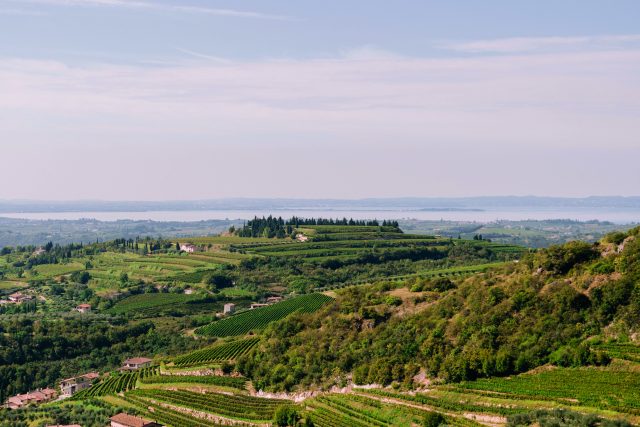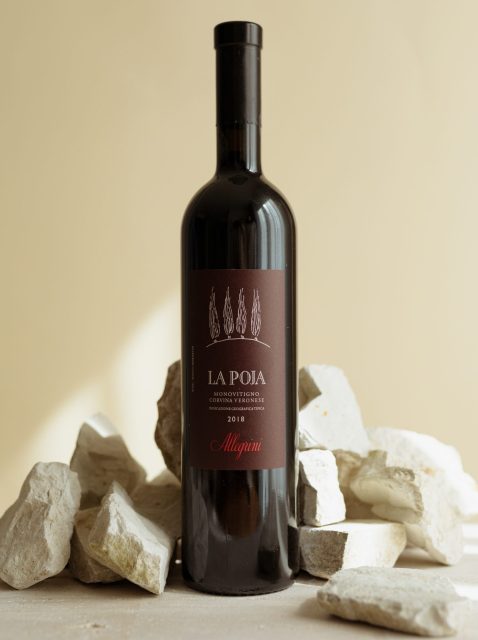This website uses cookies so that we can provide you with the best user experience possible. Cookie information is stored in your browser and performs functions such as recognising you when you return to our website and helping our team to understand which sections of the website you find most interesting and useful.
Allegrini La Poja: a champion of Corvina
At a tasting held in London last week, the Allegrini family shared how its single varietal, single vineyard La Poja demonstrates the fine wine potential of Corvina as a variety.

“In the past, Allegrini was very different to what it is today,” Silvia Allegrini, part of the seventh generation of the family to take on the business, explained. “Before my grandfather, Giovanni, we were a very typical farm in the northeast of Italy.”
Seeking to shift away from quantity of production to quality, in 1979 Giovanni Allegrini acquired La Grola, a hill in Sant’Ambrogio di Valpolicella, on top of which was a small plateau, Monte Poja. This 3 hectare plot is 320 metres above sea level, on chalky soil, with a south-easterly aspect and Lake Garda to the west helping to moderate the temperature in winter.
“He decided to grow only Corvina there because he was deeply convinced of its quality,” Silvia explained.
Despite the pergola system being traditional for the region (and surging in popularity once again), the vines were guyot-trained. Francesco Allegrini explained why: “We needed to reduce the number of grapes – the guyot system allowed us to double the number of plants and halve the amount of fruit. It also gave us better phenolic development and sugar concentration.”
The first vintage of the wine was released in 1983. Silvia revealed that when her late uncle, Franco, gave some bottles of La Poja as Christmas gifts to employees as a sort of soft launch for it, one came back after the holidays and revealed that she had used it to poach pears – apparently they had never tasted so good.

The company was fined by the consorzio for calling its first few vintages of La Poja a vino da tavola while also putting the vintage on the label. Today, due to it being a single varietal wine, La Poja is labelled as a Corvina Veronese IGT, a geographical and stylistic designation that arguably does not necessarily match the prestige of the wine. While the black variety is a vital component of Amarone, Recioto and Valpolicella Classico, the maximum percentage of Corvina permitted to meet the labelling requirements for these styles is 95%.
However, Silvia suggested that getting DOC or DOCG status is not a pressing concern for Allegrini: “We would be very happy to have a DOC for 100% Corvina wines, but our main goal is to produce high quality wines, the denomination is secondary.”
“We think that Corvina is the most important variety we have in Valpolicella,” Francesco explained. “So we wanted to create an iconic wine from Corvina.”
If anything, La Poja has been a pioneering example of the age-worthiness of Corvina when it’s on its own.
Cristina Mercuri, the first Italian woman Master of Wine candidate, guided attendees through a tasting which began with the newly-released 2018 vintage and was then followed by six vintages served blind – the oldest, as was later revealed, being the 1997.
The general distinction made was between “luce”, or light (cooler), vintages, such as 2009, and “caldo”, or hot, ones, like 2013, for example. Generally speaking, those cooler years had, in this writer’s opinion, fared slightly better in bottle, with greater vibrant acidity on the palate. Both luce and caldo vintages offered a distinct herbaceous quality that seems fairly typical for the variety – some primary fruit character of sour cherry and plum skin also remained apparent, even in the older vintages tasted.
In the case of the 2018, “a vintage of light” in Mercuri’s words, it was a growing season characterised by heavy rain in late August, slow ripening of the fruit, and, eventually, harvesting in mid-October – factors that suggest it could be one to keep in the rack for a while.
However, as Mercuri suggested, there is a place for both luce and caldo vintages: “The concept of an iconic wine is consistency of quality and scarcity of quantity, but also reflecting the vintage in a very pure and precise way.”
The blind vertical also revealed how Allegrini’s approach to winemaking has shifted. Gabriele Gorelli MW, who was in attendance at the tasting, noted how La Poja has been “progressively lightened and brightened” over the years. Francesco suggested that the 2006 vintage is the dividing line between the old and new styles, with the use of lighter toasted oak being a key factor.
In terms of how the 2018 was treated in the cellar, it spent 20 months in new Allier oak barrels, and then eight months in large Slavonian oak casks before being aged in bottle for 10 months.
“Valpolicella can be incredible outside of appassimento,” Mercuri argued – and the tasting concurred.

